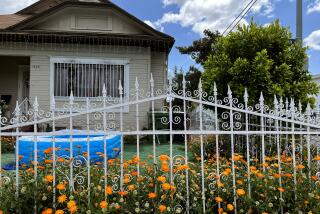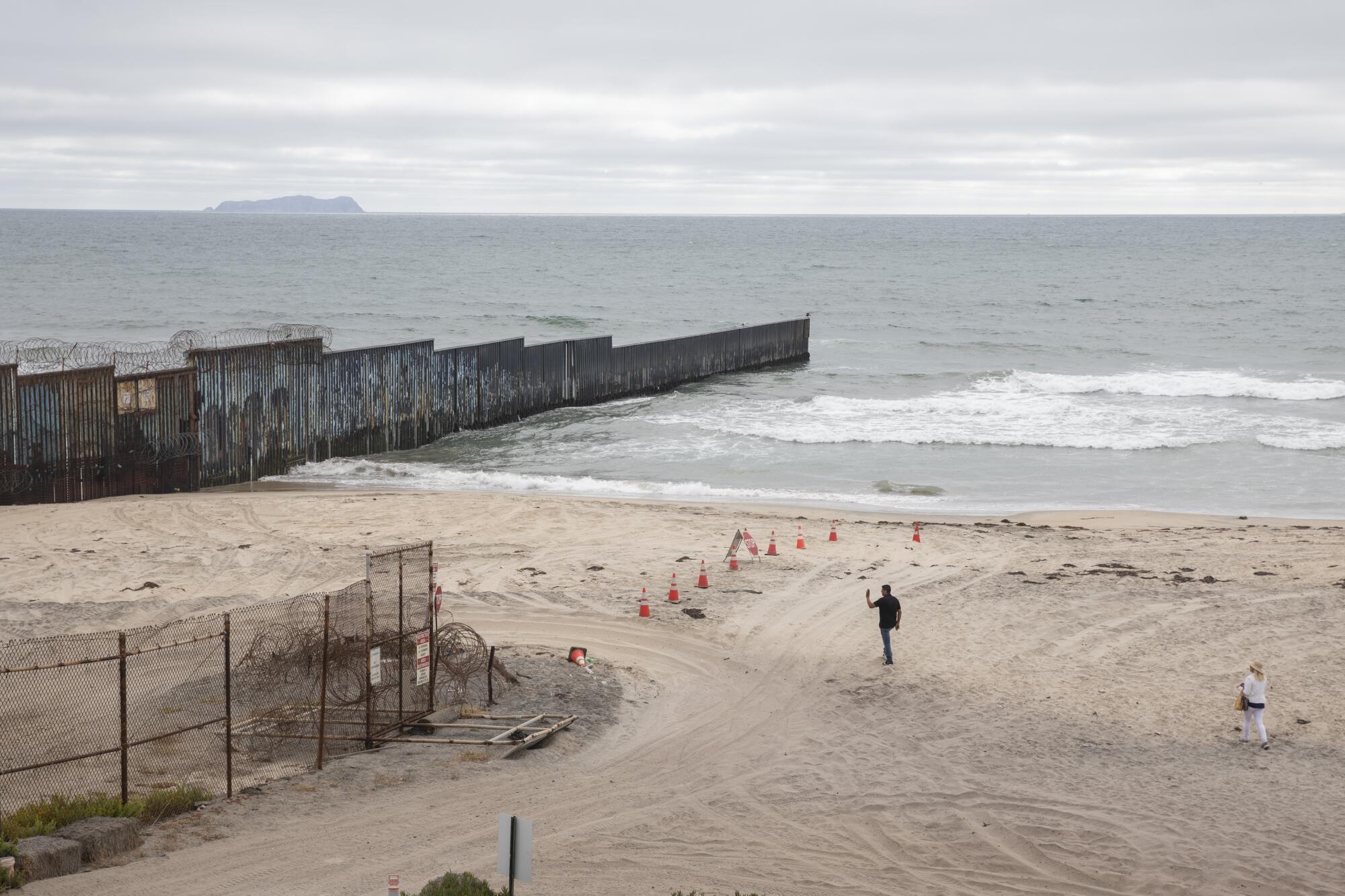
San Diego â Isabel Aguilar hasnât hugged her grandmother in well over a decade.
On Wednesday, she and her mother stood on a hill looking over the beach that is the southwesternmost corner of the United States. They waved through two border fences to her grandmother, who was standing in Tijuana. It was the first time they had seen her since Aguilar was in elementary school. Sheâs now 23 and finishing college.
This story is for subscribers
We offer subscribers exclusive access to our best journalism.
Thank you for your support.
The distance created by two rows of border wall was too far to carry on a conversation, even if they yelled. So they talked on cellphones.
They looked longingly at the space between the two layers of border barrier. Accessed by a pedestrian gate in the fence further inside the U.S., Friendship Park is a decades-old binational park that was supposed to be a symbol of the community that stretches across the border. The women had seen images online of how family members separated by the border used to be able to visit each other at this park and at least press their fingers through the mesh wall to touch their loved ones.
But Friendship Park has been closed since the pandemic began. Now, with an announcement from the Biden administration that border wall construction will resume in the area, many are concerned that the closure will become permanent.
That would make the current way of visiting family near the park â a phone call while waving through two sets of metal fencing â the new normal.
The construction plans, according to members of Friends of Friendship Park who attended a recent meeting with Border Patrol officials, will replace both of the current layers of border barrier with 30-foot bollards, or posts set close together to prevent anyone from slipping through between them â the same style that the Trump administration erected in many places along the California border.
According to the advocates, Border Patrol officials told them that current construction plans do not include pedestrian gates to allow people into the park.
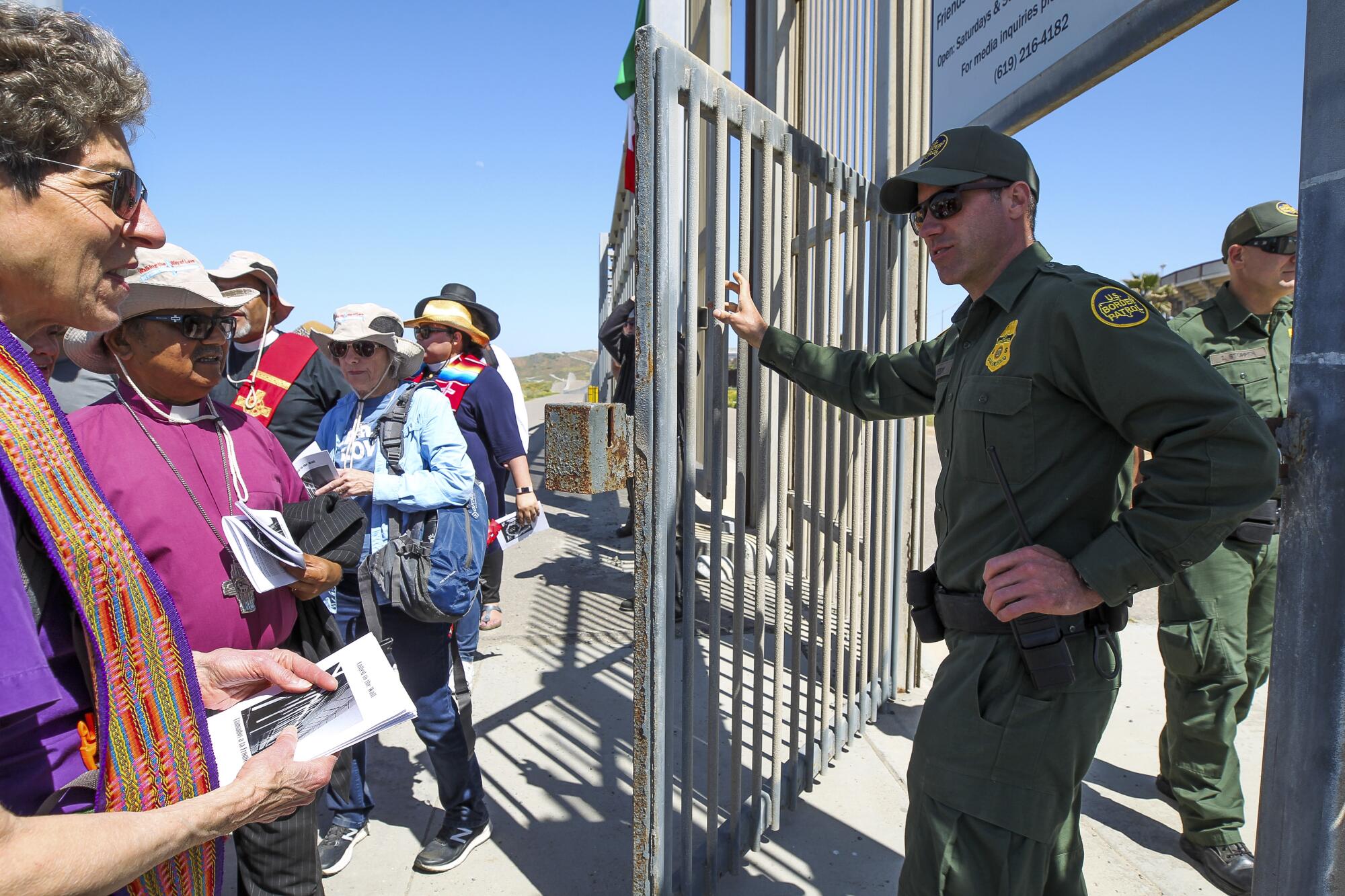
âWhat was clear was there had been no contemplation about public access to the site,â said Pedro Rios, director of the American Friends Service Committeeâs U.S./Mexico Border Program. âFor us that meant the legacy of Friendship Park where families and visitors have gathered for decades would essentially be terminated. It would be done with.â
Border Patrol Agent Tekae Michael said the project is moving forward to replace deteriorated barriers that are no longer structurally sound and now pose a safety risk. She noted that some parts of the current barrier have been damaged by the ocean.
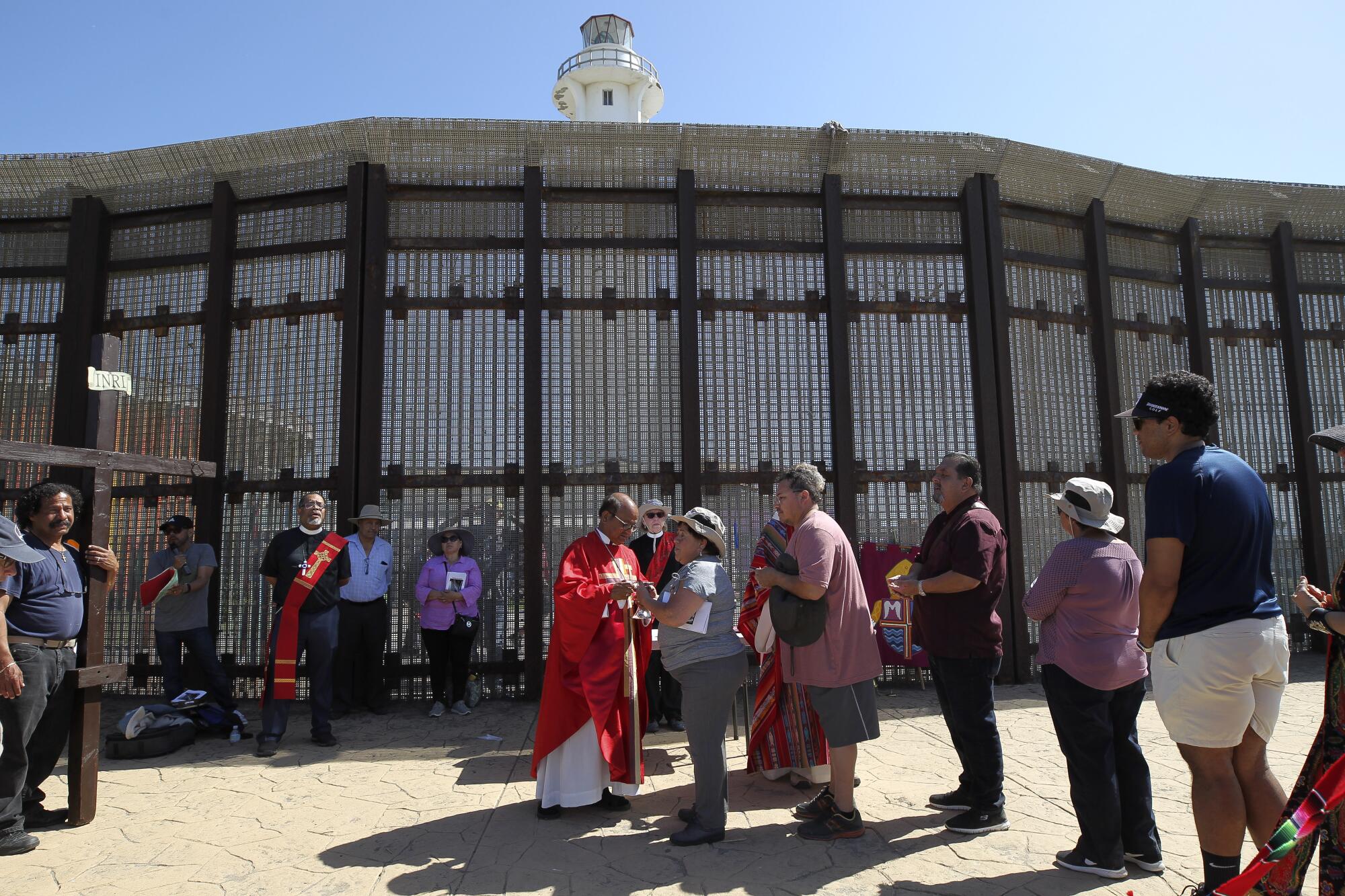
âIn the near future we should have more information regarding placement of gates,â Michael said.
She did not directly address follow up questions emailed by the Union-Tribune, including about agentsâ statements to the Friends of Friendship Park, a community coalition that advocates for access to the park.
âCBP recognizes the value of having a safe meeting place for families and friends on both sides of the border,â said a Customs and Border Protection spokesperson who declined to be named. âUpon completion of the San Diego Friendship Circle Project, CBP will identify opportunities to provide the public with access once it is operationally safe to do so.â
The construction is among seven projects that the Department of Homeland Security has decided to resume after an executive order in the early days of President Bidenâs term paused border wall construction. An announcement from DHS at the end of May said that the department expects work to begin quickly.
Advocates spotted contractors at the site on Wednesday.
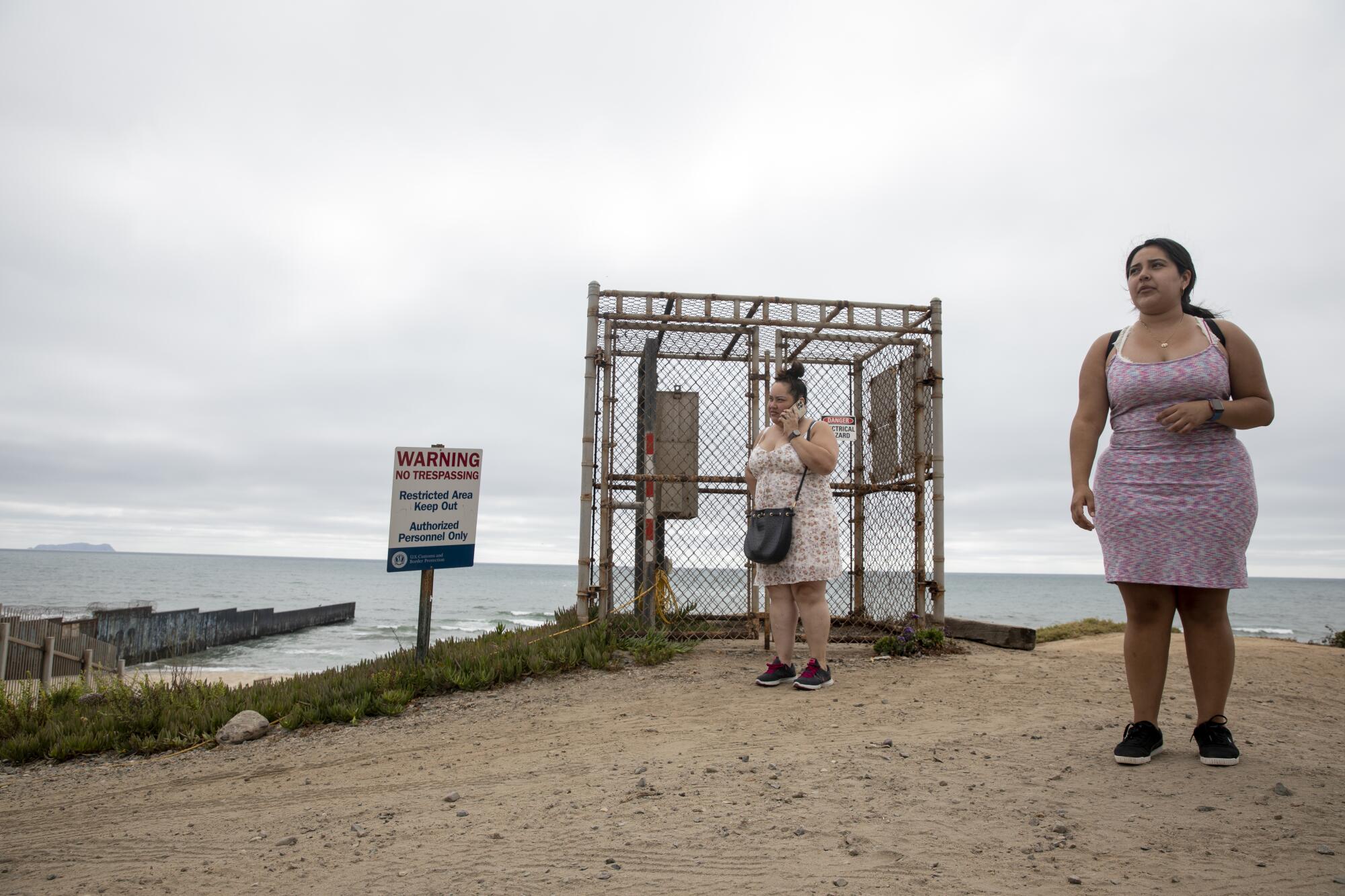
A place of hope and history
To the Border Patrol agents who monitor the area closely from SUVs and all-terrain vehicles, the U.S. side of Friendship Park is part of the âenforcement zone,â a space created strategically by the two border barriers to assist agents in capturing people trying to cross north.
But for families like the Aguilars, the stretch of land is the bittersweet place where they reconnect with loved ones left behind.
âItâs the country of opportunity, but with those opportunities come emotional tragedies,â said Isabel Aguilarâs mother, Yenory Aguilar, 41, in Spanish.
âThatâs the price for the American dream,â Isabel added in English. âYou canât see your family.â
The park, which will celebrate its 51st anniversary in August, is located inside Californiaâs much larger Border Field State Park, which shares a border with the Playas neighborhood in Tijuana. At its inception, Friendship Park was supposed to be a binational space that people from both sides of the border could enjoy.
Then-First Lady Pat Nixon said at the parkâs inauguration on Aug. 18, 1971, that she hoped the fence that separated the United States from Mexico would soon come down. That fence was little more than short posts and some barbed wire that she easily reached over to shake hands with the crowd on the Mexican side.
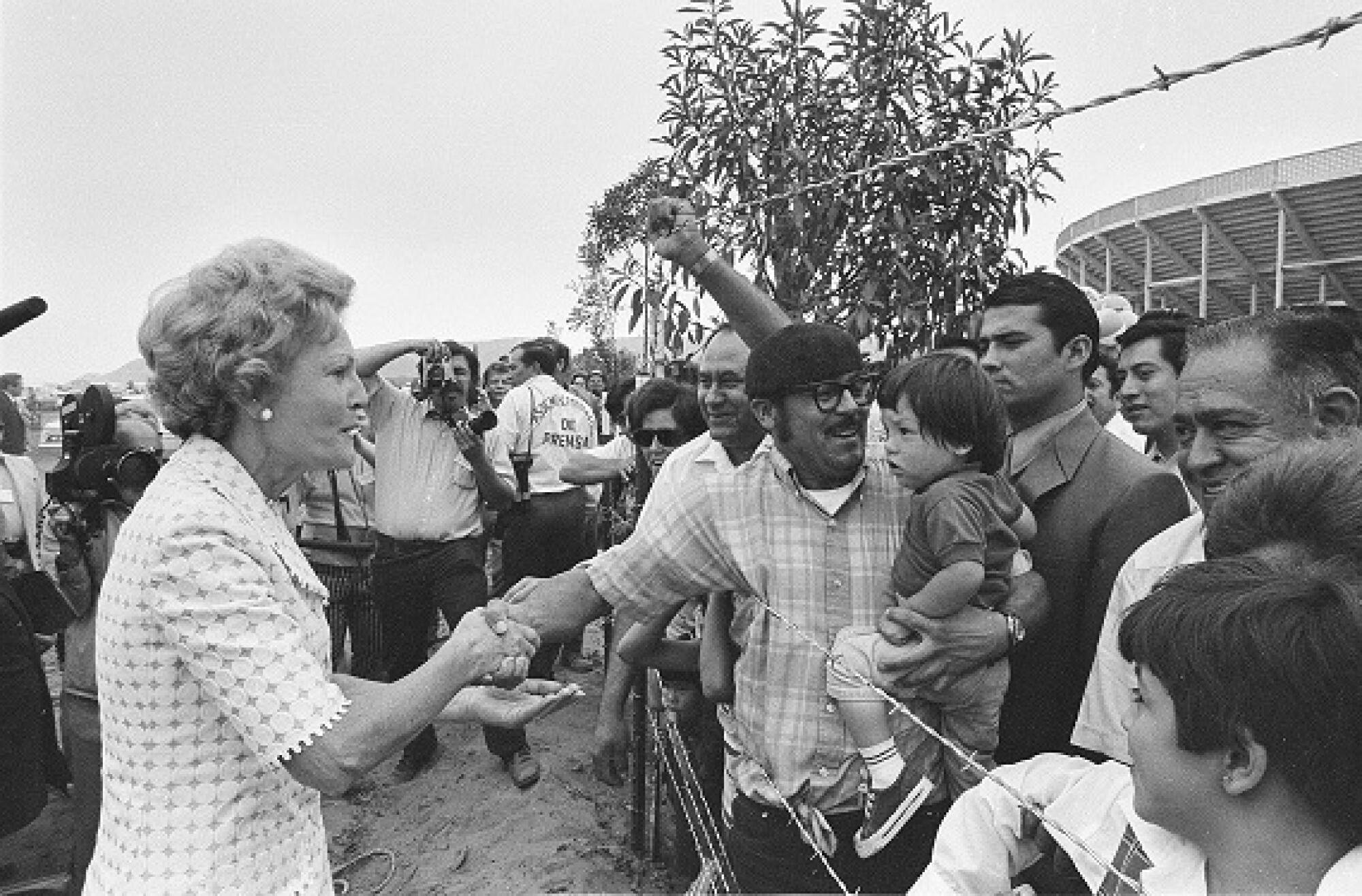
But in the early â90s, the U.S. built the âprimary fenceâ or first layer of border barrier at the site. The steel posts run all the way into the ocean. In the area around Friendship Park, the fence includes a metal mesh so that people canât pass items through it. The holes are just big enough for fingertips.
In the late 2000s, the United States added a âsecondary fenceâ or second layer of silver steel mesh fencing with razor wire on top from the edge of the beach heading east. Access to the park between the two fences became controlled by Border Patrol.
More recently, Border Patrol installed a camera and radar system that includes a sign warning that because of the potential for exposure, the device shouldnât be within about 25 feet of people. Itâs positioned very close to Friendship Parkâs pedestrian gate.
The park has long been a place of hope â advocates for greater cross-border community have hosted binational yoga, Sunday Mass and Christmas posadas. It has also been, at times, a place of protest.
Martin Luther King III visited the edge of Border Field State Park in 2018 on the 55th anniversary of his fatherâs famous âI Have a Dreamâ speech to denounce the Trump administrationâs immigration policies.
A few months later, hundreds of people marched to the border there, where some purposefully crossed the line on the beach into the enforcement zone and were arrested.
Then-Atty. Gen. Jeff Sessions also visited the area just outside Friendship Park in 2018 to announce the Trump administrationâs âzero toleranceâ policy, which led to mass family separations at the border.
At the outset of the pandemic, Friendship Park closed entirely, along with Border Field State Park. Border Patrol said that Friendship Park visitation would reopen when the state park did, but now Border Field is open, and Friendship Park remains closed. Border Patrol told the Union-Tribune in May that the park would stay closed for now because agents were too busy responding to border crossings in other areas.
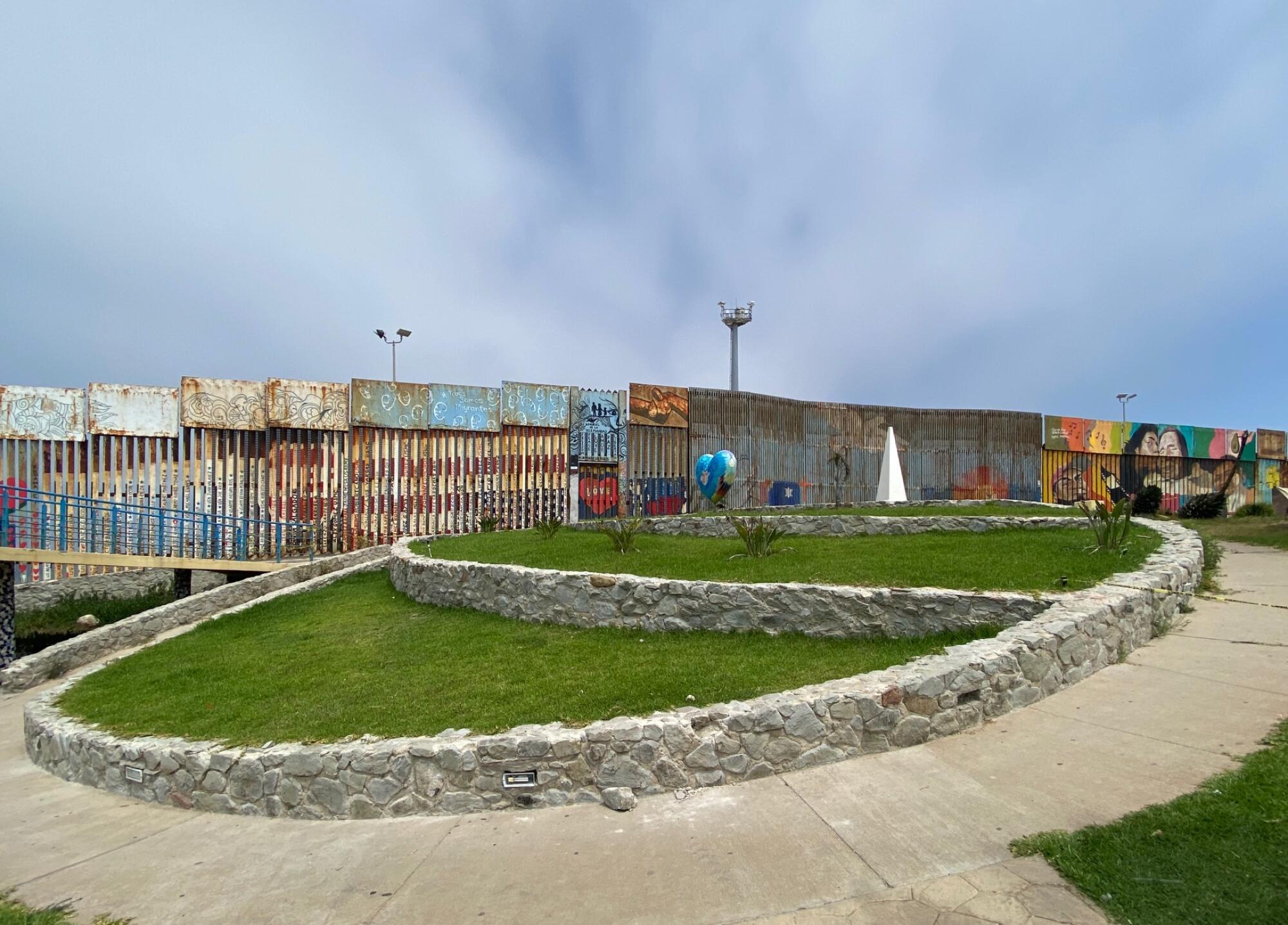
The energy and life on the Mexican side of Friendship Park â even the fence itself â have long stood in stark contrast with the quiet beach and Border Patrol agents on the U.S. side. The Mexican side is painted with extensive murals, including recently added portraits of âDreamersâ or undocumented immigrants who came to the United States as children. It is not clear what will happen to the art if the structure is torn down to make way for its replacement.
The new normal
On the Tijuana side on Wednesday, a tuba player wandered along the border fence. People sat on the beach and played in the surf. One young person whipped a skimboard through the incoming waves.
On the U.S. side, a Border Patrol agent sat in an SUV looking out over a beach that was empty except for an abandoned sailboat. The Aguilars stood a matter of yards from the agent, as close to the secondary fence as the public is allowed, to see the grandmother, Isabel Montesinos.
The Aguilars had traveled from Orange County, roughly a two-hour car ride followed by the 40-minute or 1½-mile hike into Border Field State Park, for their visit. Montesinos took a bus for several hours from her town in the state of Veracruz to an airport to then fly several more hours to Tijuana.
The Aguilars had been living in the United States undocumented but were eventually able to apply for U visas â special visas for people who are victims of serious crimes in the United States meant to encourage the undocumented community to feel comfortable coming forward to police. Theyâre now waiting on their permanent residency documents, which could take a few more years, they said.
In the meantime, they are prohibited from crossing into Mexico and re-entering the U.S.
Montesinos has several medical conditions, so the Aguilars were worried that they were running out of time to see her. Montesinos will turn 73 next week.
As they said goodbye and watched her slowly walk back to her wheelchair, both women wiped tears from their faces and hugged each other close.
When they began the hike back to their car, Carlos Quinto, 46, walked up with his wife and asked if Friendship Park had opened yet. He, too, had seen images online of families touching fingers through the fence.
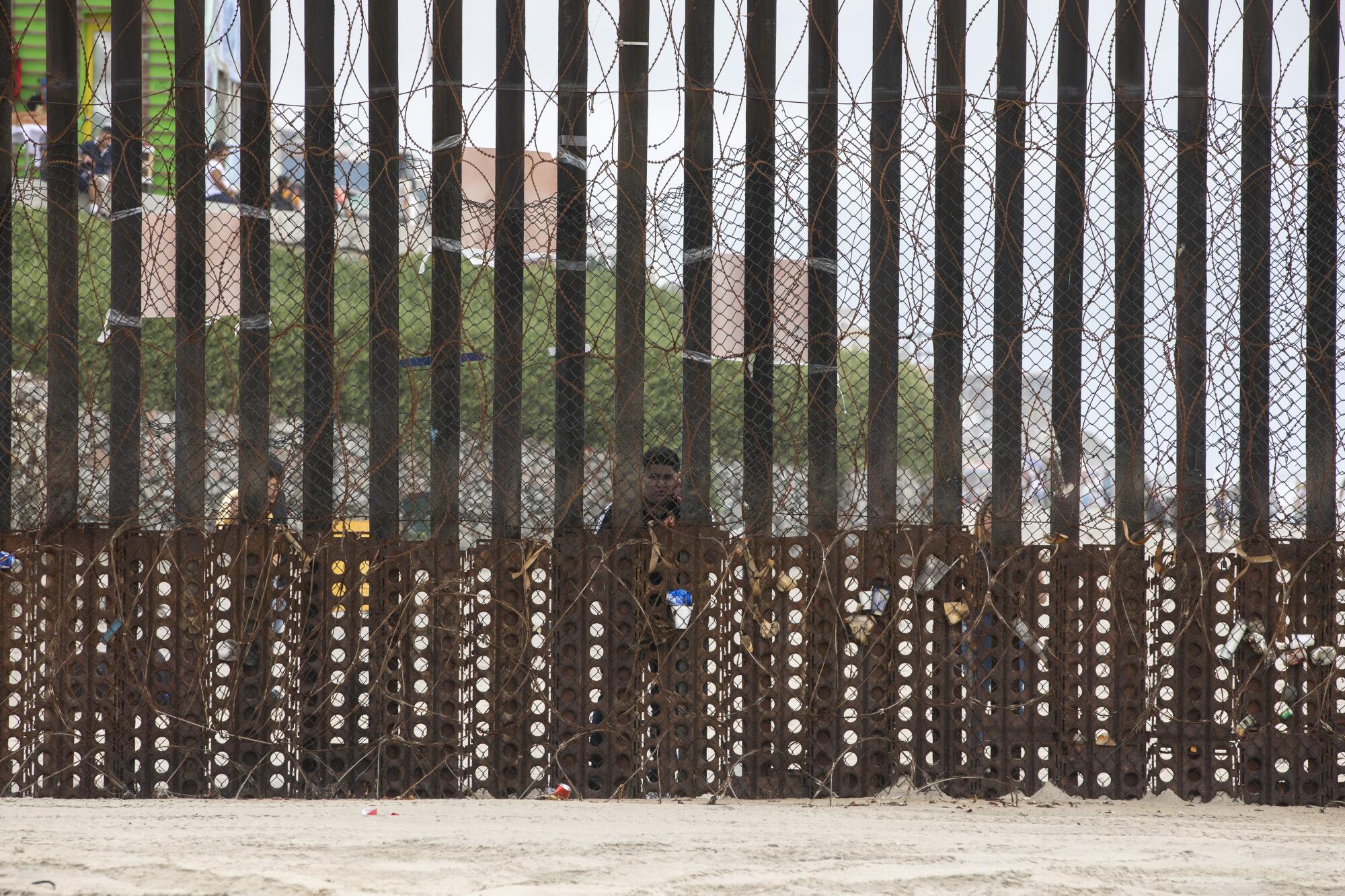
He was there to see his 20-year-old son for the first time in seven years, he said. Heâs also waiting on a green card from a U visa.
He walked down to the beach and stood in the gap where the secondary fence ends and orange cones delineate the edge of the enforcement zone. They tried to yell to each other, his sonâs face pressed against the primary fence on the border line. Then they, too, pulled out their phones. Quinto wiped tears away from his face as they spoke.
âWe miss Friendship Park a lot,â Quinto said in Spanish. âI want to cry out, to hug him. Itâs difficult.â
Cecilia Ortiz, 47, visited the area in April to see her sisters and her mother, who is 88. Ortiz, too, is waiting in the process for a green card after applying for a U visa.
She traveled from Phoenix. Her family came from Saucillo, Chihuahua. Once they arrived at the edges of the park, they held a video call so that they could hear each other, she said. Because of her age, Ortizâs mother couldnât see well enough from that distance. They spent about four hours there, as close together as they could be.
âIt feels bad to not be able to see them. If they make it taller, itâs terrible. For me, itâs not OK,â Ortiz said after learning about the wall construction project. âOne only goes to see their family. Thereâs no reason to make it taller. Weâll hope that it doesnât happen and that they open the park.â
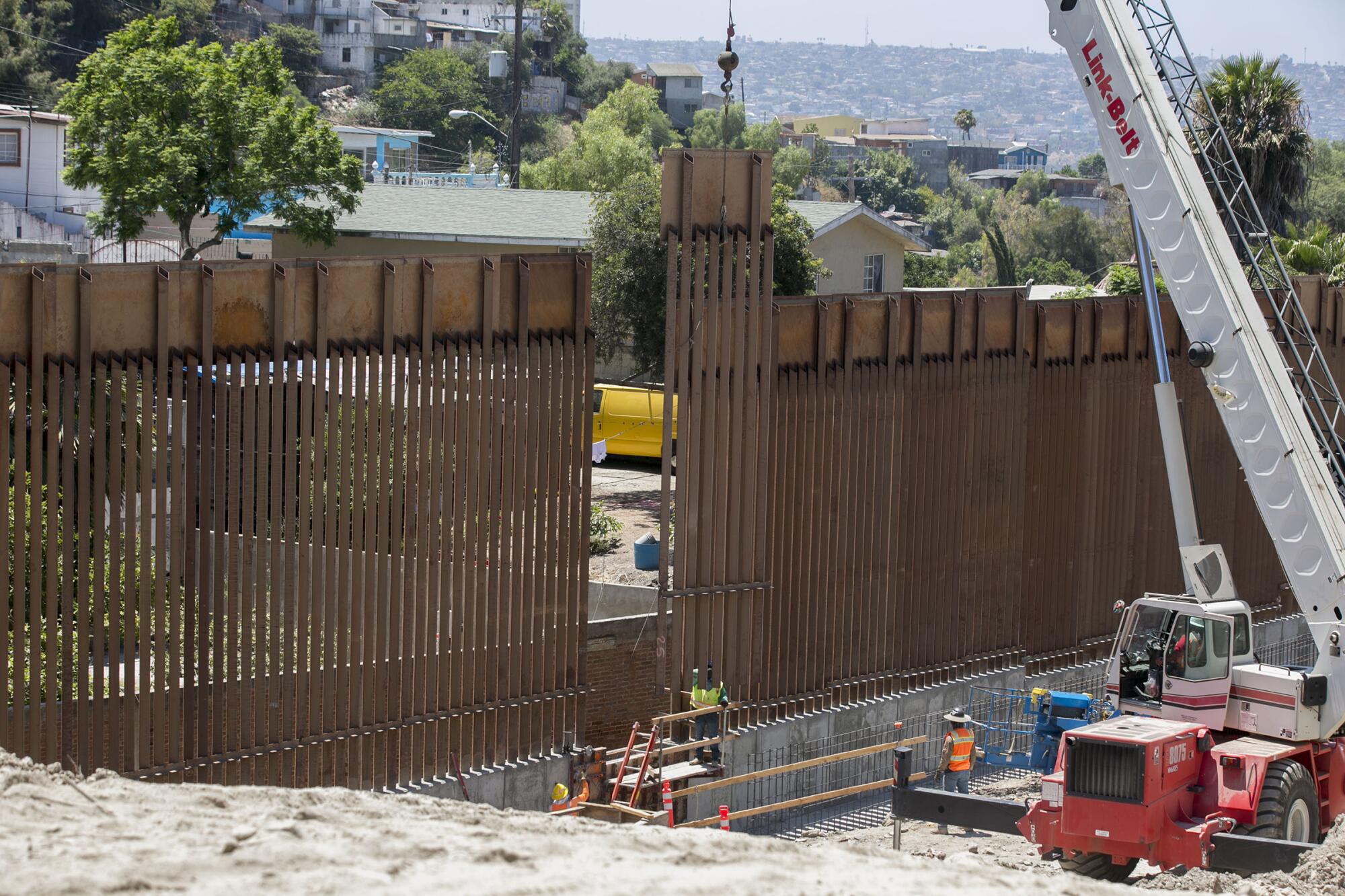
A taller wall
Border wall construction has already replaced the original primary and secondary fences along much of the San Diego border.
The new 30-foot wall, visible on the hillside east of Friendship Park, dwarfs both of the older structures still in place closer to the ocean. A recent report from UC San Diego found that injuries and deaths from falls off the border wall have increased significantly since the taller structure went up.
For Rev. John Fanestil, executive director of Via International and member of Friends of Friendship Park, even if there are gates added to the project, the looming barriers will go against the spirit of the binational park.
âJoe Biden should not be completing Donald Trumpâs border wall here in California,â Fanestil said.
He noted that Border Patrol has long tried to restrict access to the park. For years, the park would only open for a matter of hours on weekends. In 2018, the agency announced that families would have 30 minutes inside the park and that there couldnât be more than 10 people at a time.
âWe call it a ratcheting effect,â Fanestil said. âItâs one restriction after another, and those restrictions get piled on top of each other over time.â
Agents also used to periodically open a gate in not only the secondary fence, but the primary fence to allow family members to hug at the border in a highly publicized event. But that was shut down in 2018 after a U.S. citizen who couldnât cross the border because of a drug smuggling conviction used the opening as an opportunity to get married to his Mexican fiancĂŠe.
The U.S.-Canada border, too, has a binational park in Blaine, Wash., where people from both sides can spend time together. There is no border wall.
However, Canada has kept its side of the park closed due to concerns about unvaccinated Americans in the ongoing pandemic.
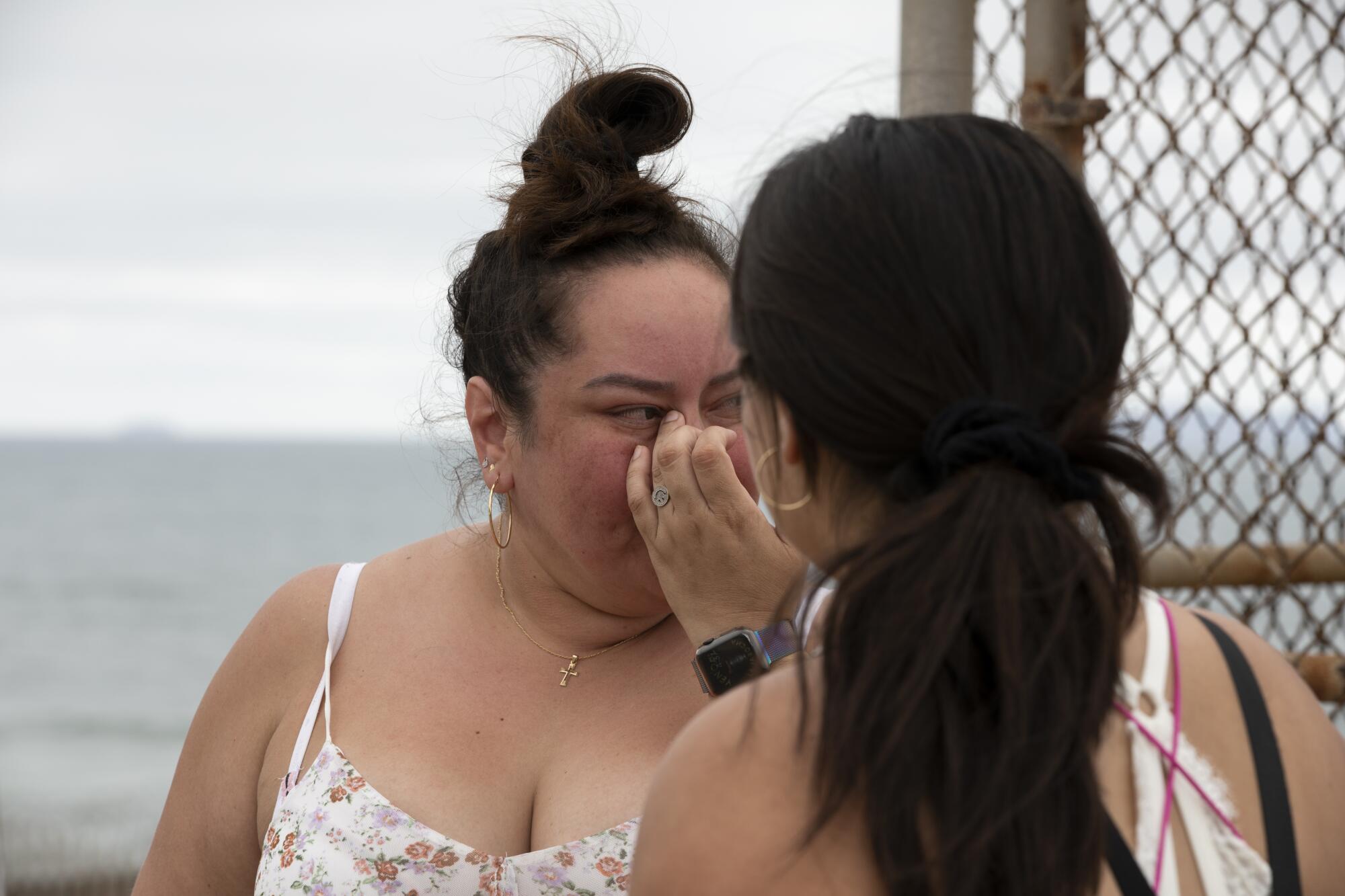
More to Read
Updates
3:29 p.m. July 20, 2022: This story was updated to reflect that it is unclear if the 2018 wedding between a U.S. citizen who couldnât cross the border and his Mexican fiancĂŠ played a role in the decision by the Border Patrol to end the gate-opening events.
Sign up for Essential California
The most important California stories and recommendations in your inbox every morning.
You may occasionally receive promotional content from the Los Angeles Times.


